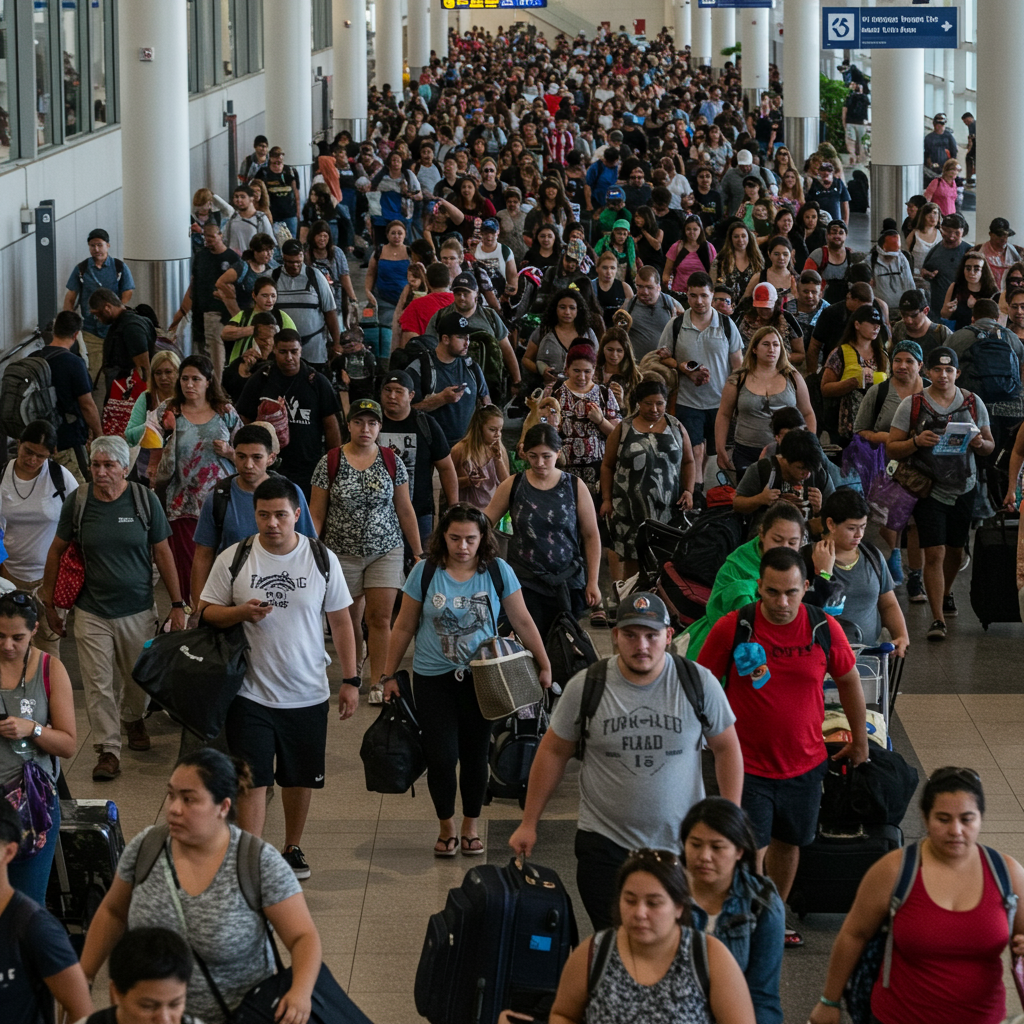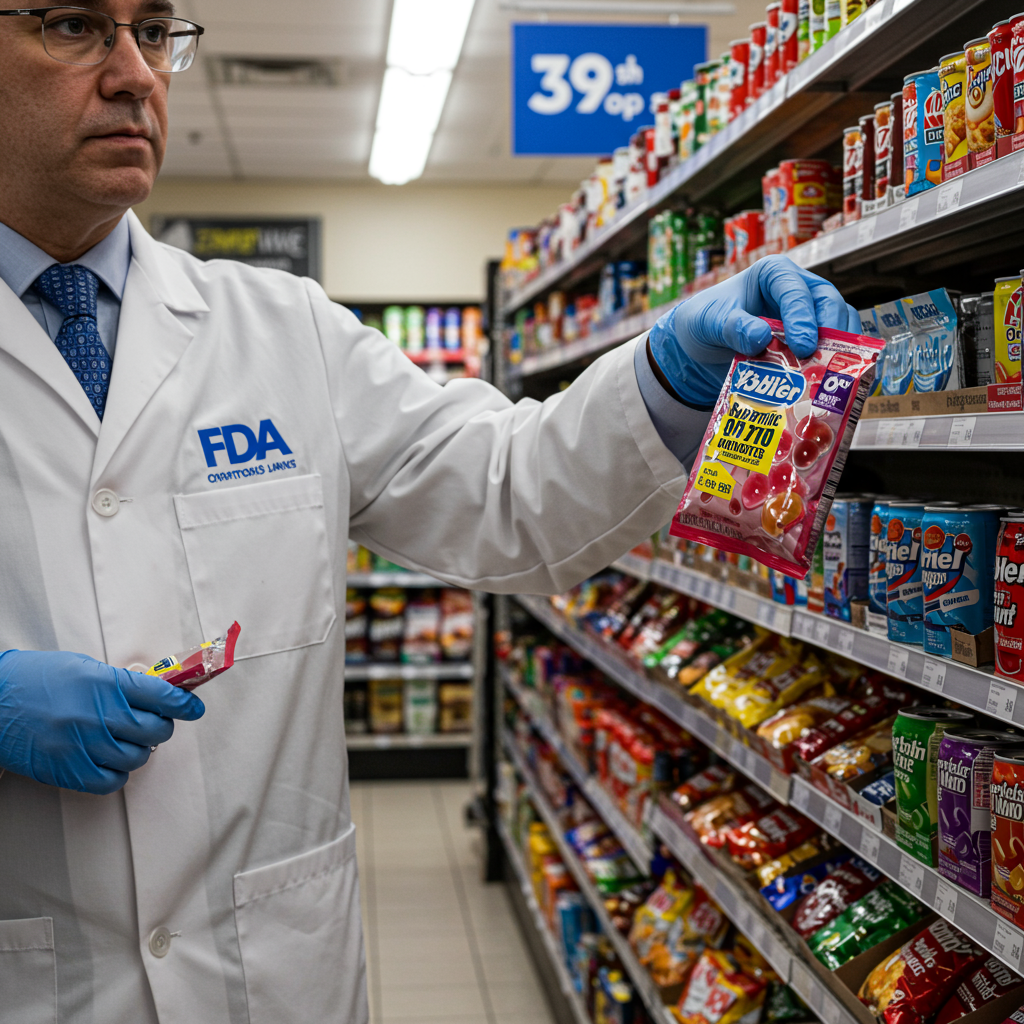Planning a getaway for the Fourth of July long weekend? You’re certainly not alone. This year’s Independence Day is shaping up to be a historic travel event. Experts predict record-breaking numbers hitting the roads and skies. Anticipate significant crowds and plan strategically to enjoy a smoother, safer holiday trip. Whether driving cross-country or flying to a nearby city, being prepared is your best strategy.
Record-Breaking Travel Expected
Independence Day consistently ranks among the busiest travel periods annually. The holiday falling on a Friday this year creates an extended weekend opportunity for many. This has fueled unprecedented travel demand. AAA forecasts a monumental 72.2 million people will venture 50 miles or more from home. This projection covers the travel window between June 28th and July 6th. It marks a substantial increase from previous years.
The vast majority of these travelers will opt for road trips. An estimated 61.6 million people are expected to drive to their destinations. Air travel is also seeing a significant surge. Nearly 6 million passengers (5.84 million) are forecast to fly. Additionally, millions more will travel by bus, train, or cruise ship. Expect heavy congestion across all transportation modes.
Navigating the Roads
Roads will be particularly busy as millions embark on driving adventures. Transportation analytics firm INRIX highlights key dates and times to avoid if possible. Wednesday, July 2nd, and Sunday, July 6th, are projected as the most congested driving days nationally. Traffic is expected to peak particularly during the afternoon hours.
For smoother highway travel, aim to depart before noon on weekdays. On weekend days, try to leave before 11 a.m. Some data even suggests peak traffic could extend from 2 p.m. to 7 p.m. Major metropolitan areas could experience delays up to 67% longer than normal travel times. Be prepared for stop-and-go conditions, especially when entering or leaving populated areas.
Essential Driving Prep
Before hitting the highway, conduct routine vehicle maintenance. Check your tires, fluids, and battery. AAA recommends packing a comprehensive emergency kit for unexpected issues. This kit should include crucial items. A first-aid kit, basic tools, and a blanket are vital. Include a car cell phone charger, a flashlight with extra batteries, and paper towels or wipes. Drinking water, snacks, and jumper cables are also essential. Don’t forget duct tape, an ice scraper, and emergency warning devices like flares or reflectors.
Roadside assistance organizations anticipate high call volumes. Last year, AAA responded to nearly 700,000 emergency calls during the July 4th week. Common problems included dead batteries, flat tires, and lockouts. Running out of gas is another frequent issue. While half of these incidents don’t require a tow, they can cause significant delays.
Rental Cars and Gas Prices
If you’re renting a vehicle, plan your pickup carefully. Hertz expects Thursday, July 3rd, to be the busiest day for rental car collections. Popular pickup locations will likely see the longest lines. Consider utilizing express pickup or loyalty benefits if available.
On a positive note, summer gas prices are currently lower than they’ve been since 2021 in many areas. Use apps like GasBuddy or TollGuru to find the cheapest refueling stops along your route.
On the Road Strategy
Map out your route in advance. Identify potential rest stops, gas stations, and food options. Fill your gas tank and pack your trunk the day before departure. This leaves less to worry about on the morning you leave. Even if you feel wide awake, plan to take a break every two hours or 100 miles. This helps prevent fatigue. If possible, switch drivers to share the responsibility.
Post-Holiday Breakdowns
Don’t let your guard down once the festivities end. Data from Allstate Roadside indicates July 5th is typically the busiest day of the summer for vehicle breakdowns. It sees about 50% more calls than average. This makes it the second-busiest day of the year after December 26th. Be mindful of potential issues on your return journey.
Taking to the Skies
Airports will also be packed with holiday travelers. The Transportation Security Administration (TSA) projects screening over 18.5 million travelers between July 1st and July 7th. The busiest day for air travel is forecast to be Sunday, July 6th. Nearly 3 million flyers (2.9 million) are expected to pass through TSA checkpoints on that single day. Some forecasts also indicate the Friday before the holiday could see peak volumes exceeding 3 million passengers.
Airport Strategy
The TSA is deploying new technologies and procedures to manage the crowds. However, they urge travelers to arrive prepared and be patient. Arriving early is crucial. Most airlines recommend being at the airport two hours before a domestic flight departure. Factor in potential traffic delays getting to the airport itself.
Ensure you have a Real ID or an acceptable alternative form of identification. This is required for domestic air travel. Review the TSA’s travel checklist and packing guidelines beforehand. This can help avoid delays at security. If you have TSA PreCheck, confirm your Known Traveler Number (KTN) is linked to your reservation. This ensures you can use expedited screening lanes. Some airports offer Touchless ID programs through airline partnerships, further streamlining the process.
Timing Your Flight
Travel booking platforms highlight the busiest departure times. Generally, 8 a.m. to 12 p.m. is expected to be peak. If your schedule allows, consider flying very early in the morning. Flights departing after 9 a.m. are reportedly twice as likely to experience delays compared to those scheduled between 5 a.m. and 8 a.m.
Flight Disruptions and Rights
Be prepared for potential flight delays or cancellations. These can occur due to weather, mechanical issues, or air traffic control congestion. If your flight is canceled, airlines are required to provide a refund, even if it’s due to weather. For significant delays, airlines may offer options to rebook on alternative flights. New regulations are coming that will require automatic cash refunds for canceled flights and significant delays. The Department of Transportation website provides details on airline commitments during disruptions. Check your flight status frequently before heading to the airport.
Other Ways to Travel
Beyond driving and flying, millions will use alternative transportation. This includes buses, trains, and cruises. This category is seeing a significant increase this year. Cruise travel, particularly to destinations like Alaska, is a major contributor. Plan for potential long lines, especially on embarkation days. Consider purchasing priority boarding packages if offered by your cruise line. Rail travelers on peak days (like Wednesday, July 2nd, and Sunday, July 6th) may encounter congestion similar to road traffic. Amtrak travelers should monitor weather advisories, as heat waves can cause delays.
Finding a Place to Stay
Whether you need a hotel at your destination or are planning a staycation, booking ahead is wise. Popular Fourth of July destinations include major cities like Orlando, Seattle, New York City, Denver, Boston, Miami, and Atlanta. While it’s ideal to book far in advance, last-minute deals might still be available. Some experts suggest booking 12-48 hours before check-in. Hotels in major cities might lower prices closer to the date to fill rooms.
Crucial Safety Reminders
Holiday travel requires vigilance. Always avoid impaired driving. Designate a sober driver or use ride-sharing services. Let passengers handle navigation and distractions. Be aware of other road users, including motorcyclists, pedestrians, and cyclists.
If fireworks are part of your celebration, prioritize safety. Ideally, leave fireworks displays to trained professionals. If using consumer fireworks, keep a bucket of water or a hose nearby. Never try to relight fireworks that didn’t go off properly. Watch displays from a safe distance, typically around 500 feet away. Fireworks can also trigger distress in individuals with PTSD; be mindful of your surroundings.
Keeping Your Pets Safe
Fourth of July celebrations, especially fireworks, can cause extreme stress and anxiety for pets. The loud noises and bright flashes can be terrifying. This leads to a significant increase in lost animals around the holiday. Animal control services often describe July 4th as their busiest day, like “Black Friday for Animal Services.” Tragically, this fear can also contribute to an increase in dog bites as animals react defensively out of terror.
Take steps to create a safe environment for your furry companions. Keep pets indoors during fireworks. Provide a quiet space, perhaps a crate covered with a blanket, where they feel secure. Playing white noise or turning on a fan can help mask the sounds. Ensure your pet gets plenty of exercise earlier in the day. Consider using animal-safe calming aids like essential oils in a diffuser (use only pet-approved oils and diffusers, never apply directly).
Critically, ensure your pets are properly identified before the holiday. Make sure they wear collars with current ID tags showing accurate contact information. Even better, ensure your pet is microchipped and that your microchip registration information is up to date. A microchip greatly increases the chances of reuniting with a lost pet if they are found and scanned. If your pet does go missing, check local animal shelters and online lost and found groups immediately.
Patience is Key
With record numbers traveling, delays and crowds are inevitable. Pack your patience along with your other essentials. Be kind to airline staff, TSA officers, hotel employees, and fellow travelers. A little understanding goes a long way in navigating the hustle and bustle of holiday travel. Check travel status updates frequently and have backup plans ready.
Frequently Asked Questions
What are the busiest travel days for driving and flying around the Fourth of July?
For driving, anticipate heavy congestion on Wednesday, July 2nd, and Sunday, July 6th, particularly in the afternoons. Some data also points to Thursday, July 3rd, and Sunday, July 7th, as peak days. For flying, Sunday, July 6th, is forecast to be the busiest day, though Friday before the holiday could also see record numbers. Early mornings are generally better for avoiding road traffic and flight delays.
What essential items should I pack for a Fourth of July road trip emergency kit?
A comprehensive emergency kit is vital. Include a first-aid kit, basic tools, a blanket, a car cell phone charger, a flashlight with extra batteries, paper towels or wipes, drinking water, snacks, jumper cables, and duct tape. Also pack an ice scraper and emergency warning devices like flares or reflectors. This helps address common issues like dead batteries or flat tires.
How can I keep my pet safe and calm during Fourth of July fireworks?
Keep your pets indoors during fireworks displays. Create a quiet, secure space for them, like a covered crate. Play white noise or a fan to help muffle sounds. Ensure your pet has plenty of exercise earlier in the day. Most importantly, verify your pet wears current ID tags and is microchipped with up-to-date contact information, as many pets escape due to fear.
Conclusion
Traveling for the Fourth of July weekend this year means joining a record-breaking crowd. Expect congestion on roads, at airports, and potentially with other forms of transport. By planning ahead, being prepared with emergency supplies, allowing extra time, and maintaining patience, you can significantly reduce stress. Prioritize safety on the road and during celebrations, and take special care of your pets. With smart preparation, you can focus on making enjoyable memories this Independence Day.




